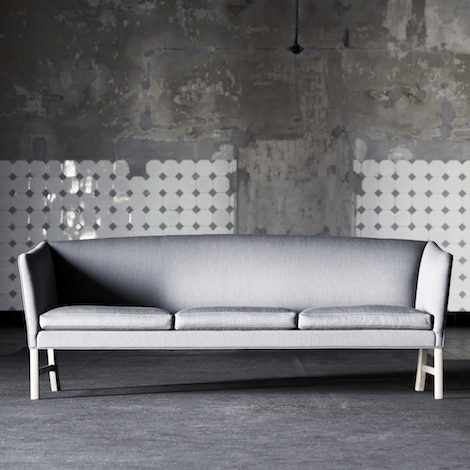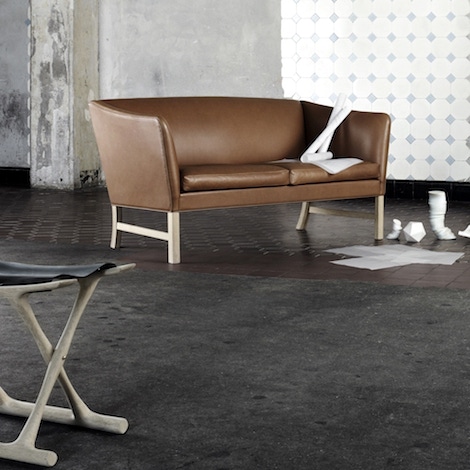The OW602 and OW603 Sofas were designed by Ole Wanscher in 1960 for a complete collection of living room furniture. As with many of his other pieces, Wanscher sought inspiration outside of his native Denmark, in classic English and Oriental furniture, giving this series of sofas their distinct curves, which have since become treasured classics.
The OW602 and OW603 sofas are handmade and have an internal structure in solid wood, witness to the extremely precise know-how of Ole Wanscher.
OW602 154 x 76 x H80 cm
CH103 214 x 76 x H80 cm
Seat height 45 cm
Legs solid oak – soaped, lacquer, oiled, white oiled, smoked oiled
OW602 Sofa
from
OW603 Sofa
from
Sif leather 95 (price group C) / white oiled oak


Ole Wanscher

Ole Wanscher (1903-1985) was integral to the core aesthetic and functionality of modern Danish design. He studied under Kaare Klint at the Royal Danish Academy of Fine Arts and later worked at Klint’s design studio before becoming an independent furniture designer. He helped shape Danish furniture design as a designer and as an educator when he took over Klint’s professorship at the Academy.
Wanscher’s classic and contemporary designs made him popular. In 1958, the Danish newspaper Politiken wrote: “Owning a Wanscher chair is an adventure every day, and will be so even several hundred years from now, for this is how long it lasts”. Today, his modern classics are still revered for their detail and his deep respect for materials.
While traveling through Egypt and Europe, Wanscher studied furniture design, finding inspiration in varied visual expressions that he incorporated into his own unique design aesthetic. He viewed furniture design as a branch of architecture and emphasized slim dimensions and resilient forms – a quest exemplified in many of his works, particularly the Colonial Chair and Colonial Sofa.
Wanscher created his best-known designs primarily between the late 1940s and early 1960s, in the post-war era when the “design for everyone” philosophy emerged. In Denmark, some of design’s biggest names created functional and affordable furniture for the Danish people and the small spaces they lived in. Wanscher took great interest in industrially produced yet high-quality furniture, designing several successful pieces.
Wanscher’s design earned him numerous accolades, including the Copenhagen Carpenters’ Guild Annual Award and the gold medal at the Milan Triennale in 1960 – honors that underscored Wanscher’s esteemed reputation both in Denmark and internationally.